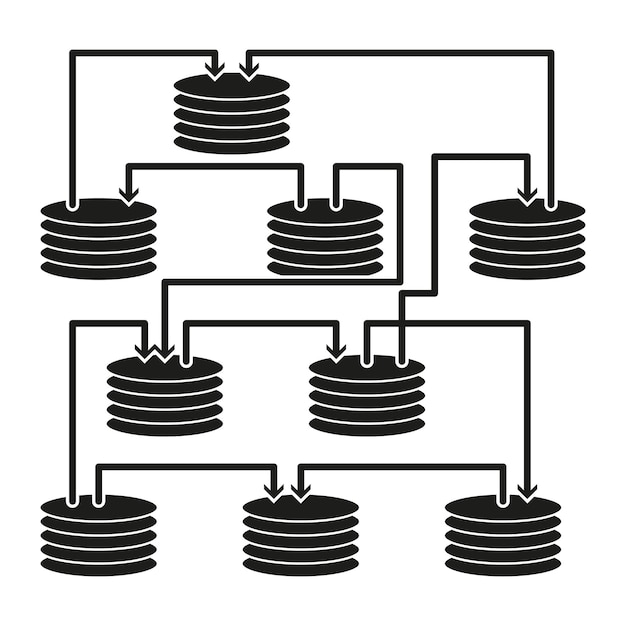Net Neutrality 2025: How FCC Rules Could Impact Your Bill

The potential repeal or alteration of net neutrality regulations by the FCC in 2025 could lead to significant changes in how internet service providers (ISPs) manage data, potentially resulting in varied internet speeds, tiered pricing, and impacts on your monthly internet bill.
The debate around net neutrality has been a hot topic for years, especially concerning how the new FCC regulations on net neutrality could affect your internet bill in 2025. As the regulatory landscape evolves, understanding the possible implications is crucial for consumers across the United States. This article dives into what these potential changes may mean for your wallet and your access to the internet.
Understanding Net Neutrality: A Primer
Net neutrality, at its core, is the principle that all data on the internet should be treated equally. Think of it as the “Magna Carta” for the internet, ensuring a level playing field for everyone.
This means that internet service providers (ISPs) should not discriminate based on user, content, website, platform, application, type of attached equipment, or method of communication. Basically, your ISP shouldn’t favor one website over another or throttle your access to certain content.
Key Principles of Net Neutrality
The concept of net neutrality is built upon a few fundamental ideas:
- No Blocking: ISPs shouldn’t block access to any legal content, applications, or websites.
- No Throttling: ISPs shouldn’t slow down your access to specific content or applications.
- No Paid Prioritization (Fast Lanes): ISPs shouldn’t create “fast lanes” for companies that pay extra, while slowing down everyone else. This prevents larger companies with deeper pockets from gaining an unfair advantage.
Net Neutrality aims to ensure the Internet remains an open platform, fostering competition, innovation, and freedom of expression. Without these protections, your Internet experience could be vastly different, affecting everything from streaming your favorite shows to accessing important online resources.

The Current FCC Regulations: A Background
The Federal Communications Commission (FCC) has played a significant role in shaping the rules governing net neutrality in the US. Over the years, their stance has shifted, leading to periods of strong regulations and periods of deregulation.
Under the Obama administration, the FCC adopted strong net neutrality rules in 2015. These rules, known as the Open Internet Order, reclassified broadband as a telecommunications service under Title II of the Communications Act.
The 2015 Open Internet Order
The Open Internet Order gave the FCC greater authority to enforce net neutrality principles. Key aspects of this order included:
- Title II Classification: Reclassifying broadband under Title II, providing a stronger legal foundation for net neutrality rules.
- Bright-Line Rules: Implementing clear rules against blocking, throttling, and paid prioritization.
- Transparency Requirements: Requiring ISPs to disclose their network management practices to consumers.
These regulations were designed to protect consumers and ensure a fair and open internet. They provided a framework for the FCC to investigate and penalize ISPs that violated net neutrality principles.
The 2017 Repeal: The Restoring Internet Freedom Order
In 2017, under the Trump administration, the FCC reversed course and repealed the 2015 Open Internet Order. This decision, known as the Restoring Internet Freedom Order, eliminated the Title II classification of broadband and rolled back the net neutrality rules.
The rationale behind this repeal was to promote investment and innovation by reducing regulatory burdens on ISPs. The FCC argued that the 2015 rules were stifling competition and hindering the deployment of broadband infrastructure.
Key Changes Under the Restoring Internet Freedom Order
The 2017 repeal brought about several significant changes:
- Elimination of Title II: Broadband was reclassified as an information service, removing it from Title II oversight.
- Removal of Bright-Line Rules: The rules against blocking, throttling, and paid prioritization were eliminated.
- Transparency Rule Remains: ISPs were still required to disclose their network management practices, but enforcement was limited.
Critics argued that the repeal would allow ISPs to prioritize their own content or favor companies willing to pay extra, potentially harming consumers and stifling competition. The future of net neutrality is far from certain, and its continuous impact hinges on political decisions.
Potential Scenarios for Net Neutrality in 2025
As we approach 2025, the future of net neutrality is uncertain. Several scenarios could play out, depending on the political and regulatory landscape.
One possibility is that the FCC could reinstate strong net neutrality rules similar to the 2015 Open Internet Order. This would likely involve reclassifying broadband under Title II and implementing clear rules against blocking, throttling, and paid prioritization.
Scenario 1: Reinstatement of Net Neutrality Rules
If the FCC were to reinstate net neutrality rules, consumers would likely see a return to the principles of an open and fair internet. Key benefits could include:
- Protection Against Discrimination: ISPs would be prohibited from blocking or throttling content, ensuring equal access for all.
- Preservation of Competition: Startups and smaller companies would be able to compete on a level playing field, without fear of being disadvantaged by larger companies with paid prioritization deals.
- Consumer Choice: Consumers would have greater choice and control over their internet experience, without ISPs favoring certain content or applications.
Another possibility is that the FCC could maintain the current deregulatory approach, allowing ISPs to manage their networks with minimal government oversight. This could lead to increased investment and innovation, but also potentially to discriminatory practices.
How Repealing Net Neutrality Could Affect Your Internet Bill
The regulation and deregulation of net neutrality significantly impacts the price consumers pay for Internet access. It is essential to consider these consequences to understand fully the role of net neutrality.
The impact of the net neutrality repeal on your internet bill in 2025 depends on business choices by ISPs. Although complete deregulation may lead to ISPs lowering prices to attract more customers, experts warn this may be short sighted.
Exploring the Possibilities
- Tiered Pricing. Without net neutrality, ISPs may offer different tiers of internet service, where access to some websites and apps is more expensive.
- Bundling Services. Another possibility is ISPs bundling their own content services – for example, their video platform – with internet access, potentially at a discount but limiting choice.
- Data Caps and Overages. ISPs might impose or lower data caps, charging extra for exceeding those limits. For consumers dependent on high-bandwidth applications like streaming or video conferencing, this could be very expensive.
The way ISPs structure their pricing and services could profoundly affect affordability and access, especially for vulnerable populations. Understanding these possibilities can help the consumer prepare for the consequences.

Strategies to Prepare for Potential Changes
Whether net neutrality rules are reinstated, altered, or remain deregulated, there are several steps consumers can take to prepare for potential changes in their internet bills and services in 2025.
The first step is to stay informed about the latest developments in net neutrality regulations. Follow tech news and advocacy groups to understand how the FCC and Congress are addressing the issue.
Steps You Can Take
In preparing for the potential impact of net neutrality laws, consumers can:
- Monitor Your Internet Usage: Understand how much data you use each month and what activities consume the most data. This will help you choose the right internet plan and avoid overage charges.
- Shop Around for the Best Deals: Compare internet plans from different providers in your area. Don’t be afraid to negotiate for a better price or consider switching providers if you find a better deal.
- Consider Alternatives: Explore alternative internet options, such as mobile broadband or fixed wireless, if they are available in your area. These options may offer competitive pricing and features.
The Role of Consumer Advocacy and Activism
Consumer advocacy groups and grassroots movements have played a crucial role in shaping the net neutrality debate. These organizations work to inform the public about the importance of net neutrality and advocate for policies that protect consumers’ rights.
The Electronic Frontier Foundation (EFF) is one of the leading organizations in the fight for net neutrality. The EFF provides resources, legal expertise, and advocacy tools to help consumers understand and defend their digital rights.
How to Get Involved
Here are some ways to get involved in the net neutrality debate:
- Contact Your Elected Officials: Let your representatives in Congress know that you support net neutrality and urge them to pass legislation that protects it.
- Support Advocacy Groups: Donate to or volunteer with organizations that are working to protect net neutrality.
- Spread the Word: Talk to your friends, family, and colleagues about the importance of net neutrality and encourage them to get involved.
| Key Aspect | Brief Description |
|---|---|
| 🌐 Net Neutrality | Ensures equal access to all online content without ISP discrimination. |
| 💰 Potential Bill Impact | FCC decisions could lead to tiered pricing or bundled service changes. |
| 🛡️ Consumer Preparedness | Monitor usage, shop for deals, and explore alternative internet options. |
| 📣 Advocacy Role | Consumer groups play a key role; support and get involved to protect rights. |
Frequently Asked Questions
▼
Net neutrality is the principle that ISPs should treat all data on the internet equally, without discrimination. It is crucial for ensuring a fair and competitive online environment, promoting innovation and preventing ISPs from favoring certain content.
▼
The repeal of net neutrality could lead to tiered pricing, where you pay more for access to certain websites or applications. ISPs might also impose or lower data caps, charging extra for exceeding these limits, impacting your monthly bill.
▼
To prepare, monitor your internet usage, compare different plans from various providers, and consider alternative internet options available in your area. Negotiate for a better price and stay informed about the latest developments.
▼
The FCC sets the regulations that govern net neutrality. They have the authority to establish or repeal these rules, impacting how ISPs manage data and what consumers pay for internet access. The FCC’s stance has switched based on political shifts.
▼
You can support net neutrality by contacting your elected officials to advocate for protective legislation, supporting advocacy groups dedicated to digital rights, and spreading awareness by talking to others about the importance of an open internet.
Conclusion
The future of net neutrality in the United States remains uncertain, but understanding the potential impacts on your internet bill and access is crucial. By staying informed, taking proactive steps, and engaging in advocacy, consumers can navigate the evolving regulatory landscape and protect their rights to an open and affordable internet.